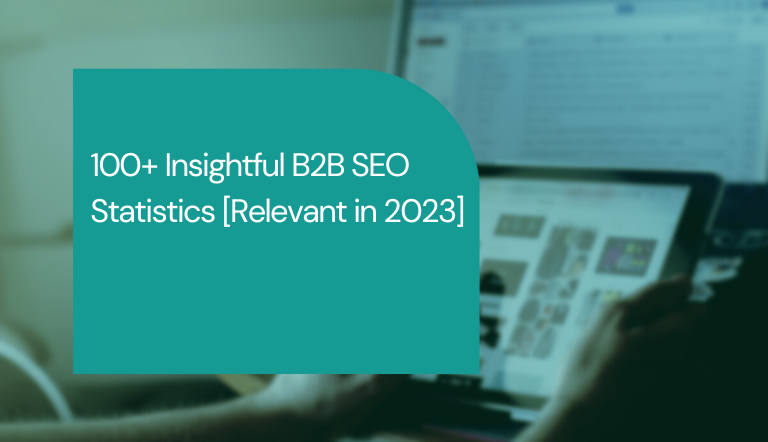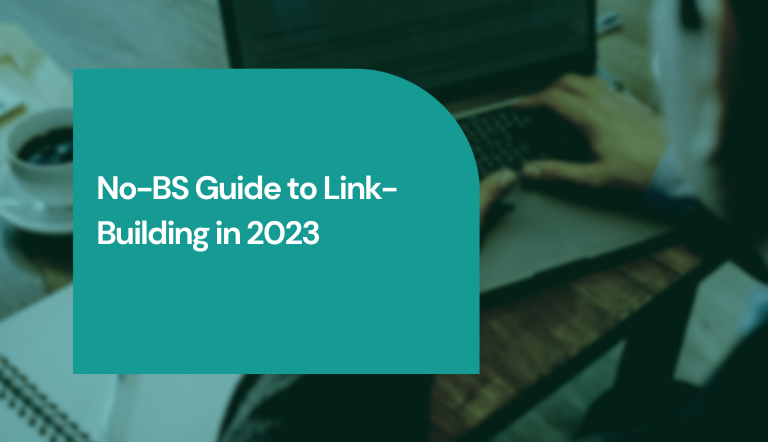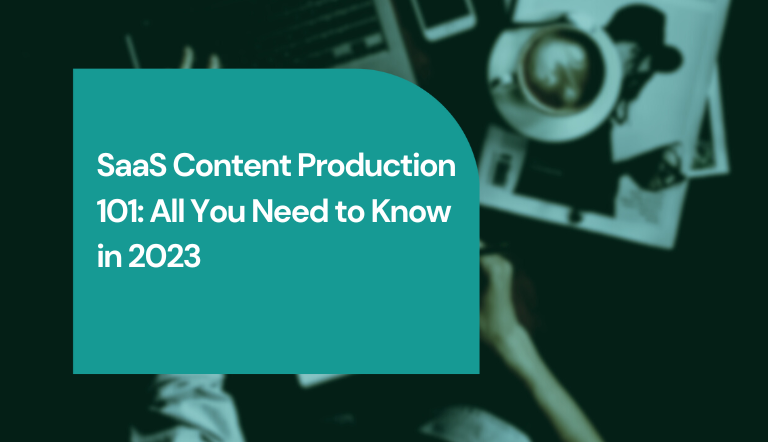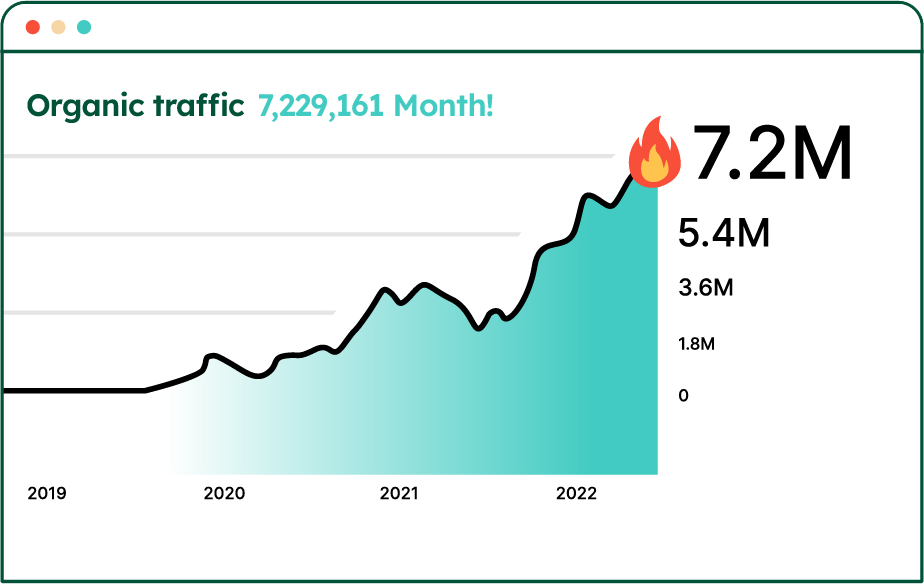Over recent years, SEO marketing has proven to be a great tool for many businesses, including Business to Business (B2B) companies. Countless B2B companies have increased their overall Return On Investment (ROI) by working on their SEO strategy.
That’s because SEO can be a key tool when it comes to taking your B2B business to the next level. From increasing your brand’s visibility to driving conversion, a good SEO strategy can take your B2B business a long way.
Want to see exactly how beneficial SEO can be for B2B companies?
Check out these 100+ insightful B2B SEO statistics:
Key B2B SEO Statistics
SEO can organically boost your business’s visibility and online presence. While there are countless stats to prove this, let us start with the ones that really drive the point home.
Here are some of the most important B2B SEO statistics to get us going:
- As reported by Think With Google, 63% of all shopping begins online, regardless of where the sale takes place.
- 70% of online marketers agree that SEO is better than PPC when it comes to generating sales and leads. (Source: DataBox)
- According to the Source Engine Journal, the average click-through rate or CTR of the top page listed on Google search is 32%.
- To rank a website, the Google Search Algorithm considers more than 200 factors such as domain name, user interaction, keywords, content length, image optimization, etc. (Source: Backlinko)
- Speed is a crucial factor for driving conversion. Out of almost identical sites, the one that loads faster is said to get 20% more conversions.
- Compared to any other marketing channel, organic search helps B2B businesses make 2 times more revenue. (Source: BrightEdge Research)
General B2B SEO Statistics
- On average, in comparison to digital advertising, SEO can reduce the cost of customer acquisition by 87.41%. (Source: Terakeet)
- The average number of searches a B2B user makes before engaging with a brand’s website is 12. (Source: Think With Google)
- Compared to paid, 70% of the clicked search results come from organic searches. (Source: BrightEdge)
- Search engines are the first place that 71% of B2B users go to when they first start their product research journey. (Source: Think With Google)
- The average close rate of SEO is 8 times higher than traditional marketing at 6%. (Source: WebFX)
- Almost 51% of B2B clients come across a new product or service through a search engine. (Source: Performance Marketing World)
- Search engine leads have an average close rate of 14.6%. Outbound leads, such as cold calls, in comparison, only have a close rate of 1.7%. (Source: Search Engine Journal)
- Paid search drives 10% of all visitors for any B2B and B2C website. In comparison, organic search drives 51% of all visitors and social only drives 5% of all visitors. (Source: BrightEdge)
- Marketers can experience a 25% increase in CTR and a 27% increase in conversion rates when they use both organic SEO and pay-per-click ads.
- Website visits, bounce rate, pages per session, and time on site are the top 4 factors that affect page rank. (Source: SearchEngineJournal)
- According to 71% of marketers, improving keyword research and using strategic keywords is the best SEO strategy. (Source: HubSpot)
- Search Engine Optimization has been the top lead generator for 33% of B2B businesses. (Source: SageFrog)
- A generic, solution-focused search is how 71% of B2B clients find their ideal brand or partner. (Source: Think With Google)
Local B2B SEO Statistics
According to a GoGuff study, 46% of all Google searches are from people looking for local information. This just goes to show that if you play your SEO cards right, even your local B2B business can benefit drastically.
As pointed out by SEO expert Neil Patel, though, B2B businesses often tend to overlook the value of local SEO. The following stats about local SEO for B2B businesses can show you exactly what you may be missing:
- 86% of users make use of Google Maps to look up the address of a local business. (Source: HubSpot)
- Within 24 hours, 28% of local searches lead to a sale. (Source: Think With Google)
- Mobile-friendly sites increase the likelihood of consumers contacting a local business by 61%. (Source: BrightLocal)
- 79% of consumers and shoppers rely on online reviews as much as they trust in-person reviews. (Source: BrightLocal)
- 76% of consumers who look for local businesses and stores on mobile phones visit the business in the next 24 hours. These visits stem from ‘near me’ searches. (Source: Think With Google)
- Almost 45% of consumers and shoppers tend to buy things online and pick them up later at the store.
- In the last two years, searches with the keyword “near me today/tonight” (Eg: “Camera equipment wholesalers near me”, “wholesale paper suppliers open today”) have gone up by a whopping 900%. (Source: Uberall)
- 51% of searches made on Google are local or related to local businesses. (Source: Think With Google)
- When it comes to SEO-led conversion rates for local businesses, the US comes in second after Germany.
Statistics About B2B Marketing Teams & Companies
An effective way to understand how SEO is changing the marketing landscape is through the people who deal with it daily.
By looking at what B2B marketers are up to these days, we can get a clear idea of how well (or poorly) current B2B marketing trends are working out.
The following set of stats is all about the growth and current status of the average marketing team and their tactics at B2B firms:
- Almost 41% of B2B companies rely on in-house marketing teams to take care of their end-to-end marketing activities. (Source: Statista)
- 59% of B2B companies outsource marketing activities such as content writing, SEO, and more to third-party help, such as agencies and freelancers. (Source: Statista)
- Almost 50% of B2B marketing teams prefer taking help from content service providers for their content marketing needs. (Source: Content Marketing Institute)
- Content creation is the primary activity that is often outsourced, as reported by 84% of B2B marketing teams. (Source: Content Marketing Institute)
- 31% of B2B marketing teams also outsource the process of content distribution. (Source: Content Marketing Institute)
- Compared to 2020, the average size of a B2B content team grew by 31% in the year 2021. (Source: Content Marketing Institute)
Mobile B2B SEO Statistics
Mobile-friendliness measures how easy it is to access and use your B2B business’s website on a mobile device. And as of 2015, Google has made it very clear that mobile friendliness is now a key ranking SEO factor.
Having a website that is mobile-friendly can help your chances of getting more leads and conversions, as shown by the following mobile B2B SEO statistics:
- Mobile devices are responsible for 55% of global internet traffic. (Source: Statista)
- Internet searches on mobile devices have helped almost 50% of consumers discover new products and brands. (Source: Think With Google)
- 56% of US-based online consumers make internet searches for local businesses on mobile devices.
- If a site takes more than 3 seconds to load, 53% of mobile viewers tend to leave it. (Source: Google)
- Outside of work-related usage, American users spend an average of 5 to 6 hours on their phones every day. (Source: Statista)
- Compared to emails, consumers are 35 times more likely to open messages on their mobile. (Source: Sinch)
- On mobile devices, the top organic search result gets 27.7% of the clicks. The most organic search result on desktop, in comparison, gets only 19.3% of the clicks. (Source: SEOClarity)
- 87% of smartphone owners use a search engine every day. (Source: Go-Global)
- Mobile marketing is a part of the marketing strategy for 68% of B2B marketing companies. (Source: Tech Funnel)
- Along with the US, more users make mobile phone searches than desktop or laptop searches in nine other countries, including Canada and Australia. (Source: Google)
- Mobile-optimized sites and pages that load a second before the competition have 20% higher conversions. (Source: Akamai)
- 45% of consumers have admitted to discovering new brands and companies from searches made on their mobile devices. (Source: Think With Google)
- Since 2017, searches with the keywords ‘where to buy and ‘near me’ have increased by 200%. (Source: Think With Google)
- Mobile users are 3 times more likely to make a voice search for local businesses than a text search. (Source: Search Engine Watch)
- 90% of B2B users are more likely to shop from the same business if they have a smoother mobile experience. Whereas, with a poor mobile experience, only 50% of users are likely to buy again. (Source: Think With Google)
B2B Marketers’ Opinions on SEO in 2022
As we already mentioned, B2B marketers can offer better insight into SEO for B2B companies. Not only do they have first-hand experience with it, but they’re also more likely to be in the loop with SEO trends and shortcomings.
The following stats shed some light on the most common opinions B2B marketers have about SEO:
- Generating organic traffic and SEO is the primary focus for 61% of B2B marketers. They are open to allocating a higher marketing budget for the same as it is their inbound marketing priority.
- B2B marketers prefer outsourcing their SEO work. Almost 68% of B2B marketers have said that they can outsource their SEO campaign, by redirecting the salary of a mid-level marketing position.
- Amongst the different aspects of SEO, link building is the hardest thing to do according to 65% of digital marketers. (Source: SEO Tribunal)
- As per a 2020 report by Junto, 57% of marketers believe that SEO generates more leads than other marketing channels.
- Keyword research, according to 39% of B2B marketers, is a challenging aspect of SEO. (Source: MediaPost)
- Technical onsite optimization is the most effective SEO strategy as per 59% of SEO specialists.
- Almost 86% of B2B companies have active blogs. (Source: FoundationINC)
- 64% of B2B marketers outsource content creation and writing to freelancers. This gives them more time to focus on other aspects of their SEO strategy. (Source: FoundationINC)
- According to 59% of B2B marketers, SEO is the most impactful tool for meeting lead generation goals. (Source: Marketing Charts)
- The headline or title tag is the most crucial element of SEO according to 36% of SEO experts.
- 80% of B2B executives say that their SEO spendings depend on projected ROI (Rate of Interest) instead of setting numerical targets.
- 87% of the B2B organizations that are from the US rely on digital content marketing. (Source: eMarketer)
- 29% of B2B marketers have admitted to using repurposed content. This can come in handy when you are short on time. (Source: FoundationINC)
- Creating relevant, knowledgeable, and useful content is the most effective SEO strategy as stated by 72% of marketers. (Source: SearchEnginePeople)
- 56% of B2B marketers consider blogging to be highly effective and 10% of them say that it can produce better ROI for the business.
Google-Related B2B SEO Statistics
We can’t really talk about search engine optimization without taking a closer look at the one search engine that stands miles ahead of its competition. Statista reports that in 2021 alone, Google had an 83% market share.
Google is the one search engine everyone’s trying to crack to improve their business’s ranking. Thus, it’s only fair that we take a look at some B2B SEO stats about Google.
- Higher-ranked and top-positioned Google articles and content pieces have an average of 1477 to 2416 words.
- Google reports 8.5 billion searches every day. That is roughly 2.4 million searches every minute! (Source: Internet Live Stats)
- Understanding Google can prove to be very beneficial as it currently holds 85.55% of the search engine market share. (Source: Statista)
- There are billions of searches that take place on Google every day. Out of these, 15% are never before asked queries. (Source: Search Engine Land)
- 94% of the total organic search traffic comes from Google. (Source: Stats Counter)
- Almost 40% of all ad spending in the US last year was on Google. Compared to that, Facebook only accounted for 8%.
- More than half, (that is 55.24% of the pages on Google) do not have a single backlink. (Source: Ahrefs)
- The lack of backlinks means that almost 91% of the pages on Google do not get organic traffic. (Source: Ahrefs)
- Only 25% of the users visit the second page of a search engine.
- William Sonoma saw an increase of 70% in their mobile sales when they used Google Ads for mobile advertising. (Source: Think With Google)
- Youtube, which is a Google subsidiary, is also a popular place for users to get information. Users are 4 times more likely to watch a Youtube video about a brand or a product than use any other resource.
- Youtube also can help with sales, as users are two times more likely to buy something they saw in a video on Youtube. (Source: Google)
- Almost 80% of all B2B and B2C companies use Google Ads.
- 29% of Google users don’t visit more than one page. (Source: Ahrefs)
- The top-ranking result on Google, on average, has 3.8 times more backlinks than the next 10 results. (Source: BacklinkO)
Website Speed SEO Statistics
One of the primary goals of your SEO strategy is to ensure that your website ranks higher than the competition. As such, it is important to take into consideration the various factors that can affect your website’s ranking, retention, and conversion.
The following stats about website speed and how it affects SEO are truly eye-opening:
- Websites that load slowly can lower your conversion rates by 4.42% per second. This is why it is important to have optimized websites. (Source: Portent)
- There is a 9% increase in bounce rates if your website takes 2 seconds to load. This can further go up to 38% if the site takes more than 5 seconds to load. (Source: Pingdom)
- The expected loading time for a website is 3 seconds or less than 3 seconds according to 83% of the users. (Source: WebFX)
- Increasing the loading speed of your website by one second can improve your conversion rate by 7%.
- According to 46% of users, poor website loading times on mobile devices are the most annoying thing while browsing. (Source: Think With Google)
- A whopping 73% of users have encountered a website that had poor or slow loading time. (Source: EggPlant)
- If your website takes 2 extra seconds to load, it can double your bounce rates. (Source: Pingdom)
- A poor website experience can also harm retention and renewals. 79% of users who had a bad online experience said that they would not shop from the same site again.
- Quicker loading times also mean that people spend more time on your website. Sites that take 5 or less than 5 seconds to load see 70% longer sessions on average compared to sites that take 10+ seconds to load. (Source: Pingdom)
- Social traffic (traffic that comes to your website from social media networks and sites) and direct traffic (traffic that comes from going to your site’s URL directly) have the highest bounce rate, at 45% and 44% each respectively. (Source: Semrush)
B2B SEO Blogging Statistics
Blogs can prove to be a very powerful tool. Today many B2B businesses use blogs as a way of increasing brand awareness and generating leads.
Let us take a look at some key blogging-related B2B SEO stats which can tell us more about how effective blogs can be for your B2B business.
- Among the various content assets that generated the best results last year, blogs with less than 3000 words ranked third. (Source: Content Marketing Institute)
- According to marketers who rely on blogging, 56% consider it to be highly effective, while 10% of marketers say that blogging shows the best result for their business. (Source: HubSpot)
- Users of the popular blogging site WordPress generate 70 million new blog posts each month. They also produce 77 million comments. (Source: WordPress)
- 43% of people skim over blog posts instead of thoroughly reading them. (Source: HubSpot)
- Businesses that have a blog received 97% more links to their site in 2021.
- Prioritizing blogging is likely to provide marketers with 13x more ROI. (Source: HubSpot)
- Nothing beats quality. More than just having a blog it is important that the blog provides users with valuable, quality information. Better content quality can increase blog traffic by almost 200%.
- Another key factor is consistency. Companies that published 14 or more blogs per month saw a 5 times increase in traffic compared to the ones which only published 4 or fewer blogs. (Source: HubSpot)
- You can also update your older blogs, as well as republish or reuse previous content. This can improve traffic by more than 100%. (Source: SearchEnginePeople)
- 48% of the companies with a good content marketing strategy make regular and proper use of blogs.
B2B SEO Social Media Statistics
Chances are, your next customer is spending their time looking at Instagram or Twitter right now. As such, social media content is a big part of every good SEO strategy today.
The statistics listed below show us that having a strong social media presence can be very good for your B2B business.
- Social media content is a big part of many B2B marketers’ marketing strategies. Over 95% of them produce regular social media content. (Source: Content Marketing Institute)
- Not just B2C, but social media is also big with B2B buyers. Almost 75% of B2B clients use social media before making a purchase. (Source: IDG)
- Social media content is also a great tool for building brand awareness. 25% of B2B marketers use it for this very reason. (Source: Content Marketing Institute)
- The biggest chunk of 22% of B2B businesses’ marketing budget is spent on social media. (Source: Smart Insights)
- 95% of B2B marketers prefer LinkedIn for content marketing whereas 89% use it for lead generation. (Source: Content Marketing Institute)
- LinkedIn ads have helped 65% of B2B companies in acquiring new clients. (Source: Content Marketing Institute)
- The average CPC for Facebook ads is $0.97 and for Twitter ads, it is $0.38. (Source: WebFX)
- Almost 86% of B2B marketers made Twitter a part of their organic marketing strategy in 2021. (Source: Content Marketing Institute)
- In the USA, LinkedIn remains the largest B2B display advertiser at 32.3%. (Source: eMarketer)
B2B SEO Statistics FAQ
Do you still have some questions about B2B companies and SEO? Check out the FAQ below:
#1. What are B2B companies spending on SEO in 2022?
81% of B2B companies pay a minimum of $7500 a month for SEO. On the other hand, $20,000 per month is the SEO budget of 55% of enterprise-level companies.
#2. How much content do you need per month for B2B SEO?
Producing 14 or more blogs per month has proven to get better results for B2B companies. Meanwhile, the top-ranking pages on Google on average have 1477 to 2416 words.
#3. Is SEO effective for B2B marketing?
Yes, SEO is important for B2B marketing as it can reduce the cost of customer acquisition by 87.41%. It can also produce 70% more sales and leads when compared to PPC.





